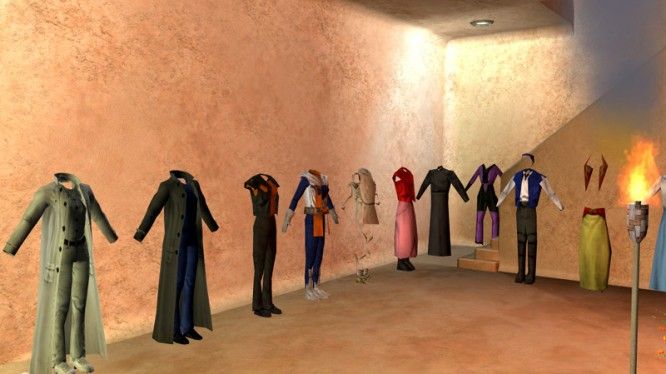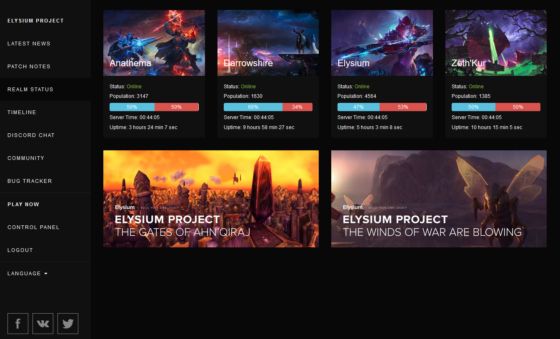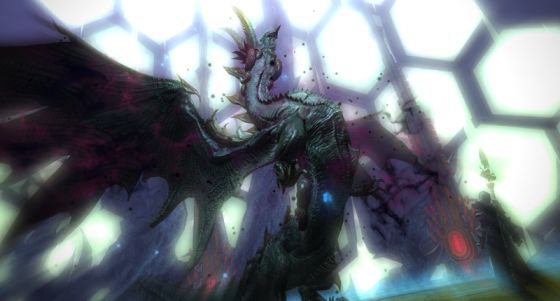If you ask nearly any MMO veteran to list aspects of a game that turn them off, chances are that ‘pay-to-win’ is at the top of the list. It’s never a good feeling to put weeks, months, or years into a character only to be destroyed by another player simply because they dumped insane amounts of cash into the game. However, the concept of pay-to-win didn’t simply happen overnight. Instead, there was a gradual shift in how developers figured out how to make money the most efficient way and what players were willing to accept from microtransactions.
Many players will remember a time before microtransactions. During the 1990s and early 2000s, most MMORPGs came in two forms: pay-to-play and buy-to-play. Players would be required to buy a base game and/or pay for a monthly subscription; some would consider this the ‘Golden Age of MMOs.’ In order to stay in business, developers needed to release new, interesting content because players expected a certain value for their monthly fee. On the other side, the MMO playerbase was generally higher quality because of their financial investment and a barrier to entry.
However, if things were supposedly so good during the times of pay-to-play and buy-to-play, why have so many MMORPGs implemented the free-to-play business model?
Influx of Developers
One of the biggest paradigm shifts for MMO design happened after the success of World of Warcraft. Memes aside, World of Warcraft had a significant effect on the world of online gaming. Before World of Warcraft, there were still a decent amount of choices for MMORPGs but most were fairly niche with specific audiences in mind. There were games like EverQuest, Star Wars Galaxies, Shadowbane, and Lineage. The main difference is that none of these were branded for your typical gamer.
When World of Warcraft came along, it tapped into Blizzard Entertainment’s massive audience. Even if you laughed at the idea of playing EverQuest, World of Warcraft instantly seemed like the ‘cool’ game to play. Blizzard drew from a massive pool of players from its StarCraft, Warcraft and Diablo franchises, and it created an immersive game world that players already loved. On top of that, the company used tons of marketing to make sure the game was known worldwide. For those reasons, among many others, World of Warcraft became, and still is, the most popular MMORPG in existence.
After a few years, tons of other developers saw that success, including insane profits that World of Warcraft was generating, and attempted to get a piece of the action. There was a massive influx of MMOs; some were fairly good quality while others… not so much. We got games like Lord of the Rings Online, Dungeons & Dragons Online, Aion, Age of Conan and Vanguard. However, few games had the draw that World of Warcraft did, and there was no reason for players to jump ship if their MMORPG needs were already met.
This caused a few things to happen. The first is that most studios stopped dumping hundreds of millions of dollars into MMORPG design and upkeep. What we ended up getting was an influx of lower quality 2D and 3D MMORPGs, such as Last Chaos, Allods Online, and Dragon nest. These weren’t necessarily all terribly games, but they definitely lacked the ‘wow factor’ of the big budget releases.
Another unfortunate effect was the closure of seemingly popular games like Star Wars Galaxies and Vanguard. Many games that didn’t close were forced to shift to free-to-play in order to stay alive, or at least stay on life support. At this time, free-to-play wasn’t necessarily the red flag that it is now. Most of the time, free players were simply gated off from premium content. This was the case with RuneScape all the way back in 2001 and many MMOs that failed at pay-to-play attempted something similar.
Things were looking unfavorable for MMORPGs at this point in time, but the worst was definitely yet to come. Around 2012, there was an invasion of free-to-play browser games: Wartune, League of Angels, Lords Road, [insert anime title] online. These are the games that essentially play themselves and reward players more for how much money they invest, rather than time or skill. And these games are actually successful, at least for a limited amount of time, or there wouldn’t be hundreds of these games with thousands of servers out there. There’s the argument that the new interest in MMO gaming from China helped with this movement, but if that was the sole reason then these games wouldn’t be as prevalent in Europe or America.
Introduction of Mobile Gaming
During this same time period, mobile gaming was starting to pick up a lot of momentum. It wasn’t just Candy Crush or Angry birds, either. There were also MMORPGs (Order & Chaos Online) and CCGs (Rage of Bahamut) that were generating insane amounts of revenue. In the latter, players could gain a significant advantage simply by spending as much money as possible. Furthermore, there was almost no other way to catch up in games like Rage of Bahamut; the events rewarded players who spent the most money and created a major gap between free players and those who payed.
While I could go into an extreme amount of detail regarding mobile gaming, the main point to take away is that both free-to-play and pay-to-win are considered the norm on the platform. If you look at sales and downloads between free games and buy-to-play games the difference is staggering. Even games with a tiny price point (under $10) don’t come anywhere close to free-to-play titles.
For example, Call of Duty: Black Ops Zombies ($6.99) only has around 100,000 downloads compared with Modern Combat 5’s (free) 50 million. If 50 million people are willing to try a free game versus spending under $10, it’s obvious where the market is. And many of these free-to-play games are built around spending money to either level up quicker or obtain more powerful equipment.
Players are Part of the Problem
While some would correlate blaming players to victim shaming, there is a direct link between the actions of gamers and what developers produce. Why is there an abundance of free-to-play games? Because people don’t want to purchase a game or pay a subscription fee. Even worse, some players have a sense of entitlement where they feel games should be both free and not cater to those willing to spend money. If more players were willing to spend money upfront, there would be a smaller emphasis on free-to-play titles. Instead, people don’t pay for games and then complain about pay-to-win mechanics in free games.
There’s an argument floating around that if developers created better content then players would surely dip into their wallets to fund the game. Here’s an example of why that’s a false dichotomy: Elysium. Not only is vanilla World of Warcraft regarded as one of the best MMORPGs to ever exist, but Elysium’s playerbase is full of ‘hardcore’ gamers. Your typical casual(free) MMO player probably doesn't even know what Elysium even is, and they’re not likely to stick around once they've tried it out.
As of writing this, there are more than 10,000 active players on Elysium’s servers. Although that’s not an exuberant amount of players, it’s more than many active MMORPGs currently on the market. If each user was paying the standard $14.99 subscription, it would total close to $150,000 per month. Elysium can barely keep its website and game servers running at $150 and €310 per month. Currently, only two servers have been fully funded and most of the donations came from a single backer.
Of course, Elysium doesn’t charge a fee and operates solely on donations, but if players were willing to pay for high-quality content that they love, shouldn’t these servers not be on the verge of shutting down due to a minuscule financial burden? People have been begging Blizzard for an official Vanilla server for years and yet one exists that no one wants to fund.
Hunting for Whales
While players not willing to pay for content is a major part of the problem, there is also an issue with those willing to spent too much. I’m not judging the way these people spend their money (if you’ve got it, spend it whatever way you like), but it does become a problem when money can buy near infinite power and degrades the experience for everyone else. These players, who spend hundreds or thousands of dollars to gain a significant advantage, are called ‘whales’ or ‘wallet warriors.’
While the numbers vary, nearly all data suggests that whales are the driving force behind free-to-play monetization. A study by Swrve (2014) reported that 50 percent of mobile income comes from 0.15 percent of a game’s population. Generally, only 2-5 percent of a free-to-play game’s playerbase will ever make an in-app purchase and the amount spent scales drastically.
Game companies realized this a long time ago and learned how to develop games that specifically target this types of players. There’s a chemical reaction in our brains that makes us feel good for spending money and gaining instant power in a game. People without limitations, either financially or psychologically, will abuse this feeling over and over until they’ve spent thousands in a game they might not care about in a few months. The rest of the players in the game are made just happy enough so that it feels like a nice, populated playground for the whales to stomp around in.
Economically, it definitely makes sense to build games this way. Let's say a mobile game has 10 million downloads and 2 percent are casual spenders that drop $20 to support a game they enjoy. Then there are the 0.1 percent who are true whales spending at least $10,000. That’s approximately $104 million in revenue. Even if you tone down the amount spent by whales to $1000 then that's still $14 million for a game that didn't cost nearly that to build; a typical mobile game costs $50k to $2 million to make.
Now compare that to a subscription based game, which is going to have far less users. If 1 million people paid $60 for a retail copy of a game and then $15 for a one-month subscription that’s only $75 million total, and that number will fall off drastically after the first month. Furthermore, in order to develop a full-priced game worth a subscription, the costs would be well higher than a free-to-play browser or mobile game. It's estimated that World of Warcraft cost $63 million to develop and $200 million to maintain for the first four years.
Even if you’re not spending money, knowingly playing games with pay-to-win mechanics reinforces the drive for developers to keep building them. You don’t have to spend money because someone else will.
Quality Wins
There were never an abundance of AAA quality MMORPGs on the market. Over the years, there have only been a handful of games that reached the quality of EverQuest, World of Warcraft, or Guild Wars for their time. Currently, there are still quite a few subscription and buy-to-play games around that don’t suffer from pay-to-win mechanics.
In fact, all of the top performing MMORPGs in North America and Europe utilize one of those business models: World of Warcraft, Final Fantasy XIV, The Elder Scrolls Online, Guild Wars 2, and Black Desert Online. Of course, each of these titles has also been influenced by the idea of cash shops, but it’s definitely not as outrageous as most and generally consists of things like cosmetic items or inventory expansion. In order to survive, even these top-tier titles have been required to become hybrids, which should demonstrate the power of pay-to-win or pay-for-convenience.
Despite the thousands of free-to-play games around, it's the high quality ones that survive and become the most popular. Just because a free-to-play game has 10 million downloads doesn't mean there are that many players. They're designed to initially attract a larger number of players by offering something shiny and new, and then once revenue starts to decrease they're abandoned or put on 'maintenance mode.' It's rare for an MMO with an emphasis on pay-to-win to stay popular for more than a few months.
How to Stop P2W
In all likelihood, the concept of pay-to-win will never be erased from the gaming industry. As long as there are developers who value money above all else and players who will spend any amount to gain power over fellow players, pay-to-win will exist in MMOs.
If you want to make a difference, you can vote with your time and your wallet. Even if you don’t spend a cent, taking part in a pay-to-win economy allows that business model to keep working. If enough people made that conscious choice then there might be another industry shift that is more player friendly. Industries shift on the needs and wants of consumers, and videogames are no different.






